Past Presidents of Seton Hall
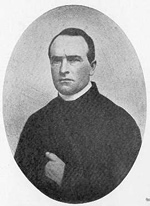
Seton Hall College was first located in Madison, New Jersey, and commenced operations
on September 1, 1856 with an initial enrollment of five students. Those who were included
on the registration rolls under the leadership of Father McQuaid could expect to endure
a structured seven-year Classical, Liberal Arts program (three year prep and four
year college study) with heavy emphasis on Theology, Philosophy, Latin, Greek and
Foreign Language offerings.
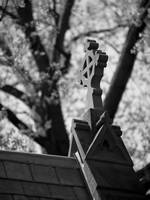
Father Fisher was counted among the first college faculty members, and one of four
diocesan priests who taught at the school during its first few years in operation.
Under his guidance, Seton Hall conducted their first commencement exercises held during June of 1857. During this period (and over the next few decades),
Seton Hall played host to various meetings of the Diocesan Synod held on campus with
some assistance from Father Fisher and his fellow clergy and other institutional leaders.

During his second term as chief executive, Father McQuaid helped with the move of
the Seton Hall College campus from Madison to South Orange in 1860. The College was
Incorporated by Act of the New Jersey State Legislature on March 8, 1861. Father McQuaid
also belonged to the first Board of Trustees and co-authorized approval of the first
Bachelor of Arts degree (A.B.) that was awarded to Louis Edward Firth in 1862. The
earliest corporate seal included the Seton Family coat of arms and image of the Blessed
Mary along with the enduring motto — Hazard Zit Forward — "No Matter What The Hazard,
Yet Forward" was subsequently designed and adopted by the institution during May 1864
with sanction offered by Father McQuaid. He later became Bishop of Rochester (NY).
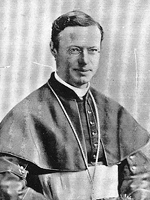
The activities of Father Corrigan centered mainly on work conducted on behalf of the
Diocese of Newark in support of Seton Hall College prior to his elevation as second
Bishop of Newark in 1873. During his tenure as President, Father Corrigan dedicated
the Immaculate Conception Chapel in 1870. In addition, he was active in building enrollment
numbers and throughout the nineteenth century. The school experienced steady and sustained
growth by attracting interested students from nearby South Orange and the Newark metropolitan
area along with prospective students as far away as Canada, France, Santo Domingo,
Spain, and other locales.
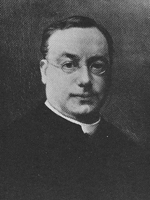
The presidency of Father Corrigan came directly after that of his brother and coincided
with the Silver Anniversary celebration for Seton Hall College observed during the
Fall of 1881. Administrative efforts conducted through the leadership of Father Corrigan
included overseeing the construction of Alumni Hall (currently serving as home to
the Immaculate Conception Seminary) built in 1883. He also oversaw the fund raising and subsequent rebuilding of the
main College Building in 1886 after a fire (an earlier blaze occurred in 1866) destroyed
this edifice.
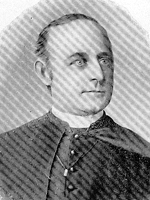
Father Marshall was instrumental in helping to launch a Military Science and Tactics
Department (a forerunner to the modern-day Theology among others which served as the educational hallmark of Setonia as the school moved
into the latter years of the 19th century.
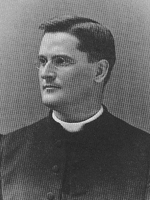
After the re-structuring of Seton Hall College in 1897, Father Synott worked with
local authorities to help Seton Hall achieve wider recognition through accreditation
agencies representing both the states of New York and Rhode Island resulting in the
acceptance of credits earned at Seton Hall in line with guidelines recommended earlier
by the New Jersey Department of Education. Further improvements on the academic front
initiated by Father Synott came about in 1898 as Seton Hall built its first formal
library facility (Marshall Hall) at a cost of $35,000, which originally housed 18,000 volumes.
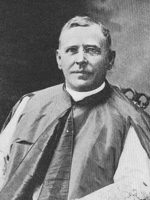
The Golden Anniversary of Seton Hall College was celebrated in 1906, and president
Monsignor Stafford presided over the commemorative ceremonies and special Commencement
Exercises that featured over1,200 attendants at the first indoor ceremony in school
history which took place at the nearby Newark Theater. As the 20th century dawned
and progressed, Setonia experienced a number of firsts in the realm of athletics having
fielding its earliest inter-collegiate basketball squad in 1903, and the construction of a permanent baseball diamond (located on the present-day
Owen Carroll Field) which was christened two years later. Father Stafford was also instrumental in the
plans and aiding with construction of the School Infirmary and residence for the Sisters
of Charity who assisted with campus operations at this time.
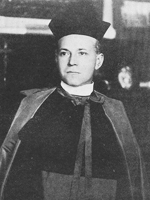
Monsignor Mooney assumed the leadership role of Seton Hall College after serving as
Rector of the Immaculate Conception Seminary. The physical plant on campus underwent dramatic change as another structural fire
occurred in 1909 and destroyed most of the College Building (Stafford Hall), but he
was able to help lead rebuilding efforts during the aftermath. Mooney Hall, named
in his honor was opened in 1910 and originally housed the high school division after
serving for a short time as the main administrative center for the college. The school
infirmary was upgraded and renovations to the Chapel of the Immaculate Conception
were undertaken around this time along with the opening of Bayley Hall (which housed
the short-lived Seton Hall Grammar School) three years later. Monsignor Mooney enjoyed
the longest tenure of any president in Seton Hall history during its first 125 years.
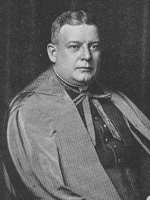
Through the efforts of Monsignor McLaughlin, enrollment increased after the Great
War, and the aesthetic look of campus changed as well after all college-owned acreage
on the northern side of South Orange Avenue was sold in 1922. In artistic terms, student
publications, including Immaculate Conception Seminary moved its operations to Darlington, New Jersey in 1927, but the two schools retained
close ties as part of the Diocese of Newark family (becoming an Archdiocese in 1937)
with the maintenance of the Aquinas House of Studies, a residential facility for student
priests. In 1931, Seton Hall College celebrated its Diamond Jubilee. That same year,
Setonia adopted the appellation "Pirates" as the nickname for each of its athletic
teams. The school later attained Middle States Accreditation a year later, and in
1933 attained affiliation with the Association of American Colleges and American Council on Higher Education.
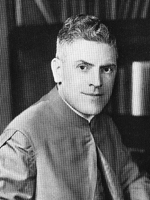
Monsignor Monaghan was instrumental in keeping Setonia operational during the Great
Depression-era. Admissions standards during the 1930s included the following criteria
for an applicant: "(they) must show evidence of good character, intelligence, ambition
and acceptable personality. In addition … they must meet certain academic standards."
Requirements for a diploma included four years of Philosophy.
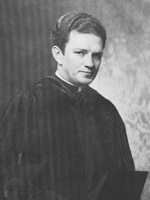
At the time of his inaugural, Monsignor Kelley became the youngest college president
in the nation, having turned 33 years old when hired at Seton Hall. In 1937, the Newark
and Jersey City Extension Schools (Urban Division) opened for the express purpose
of educating both men and women who were unable to attend the day school in South
Orange. The Bayley Seton League, founded in 1938, gave financial support and helped
with campus beautification projects and related endeavors for several years thereafter.
By 1940, Walsh Gymnasium opened, and the first nursing courses were offered at Seton Hall that same year. During the mid-1940s, Seton Hall had low
enrollment numbers, which were made up mainly of those who were nearing enlistment
in the armed services or enrolled in the minor seminary. After World War II, the 94
percent enrollment rate at Setonia became the highest level of student enrollment
increase in the entire nation. Monsignor Kelley also hired the first African-American
faculty member in school history, Dr. Francis Hammond in 1946. Heralding this development,
radio station W-S-O-U (the first college-operated FM station in New Jersey) went on the air in 1948.
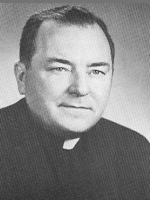
Monsignor McNulty helped to secure university-status for Seton Hall on June 2, 1950
by act of the New Jersey State Legislature. During this time, the school also established
four separate academic divisions including a Institute of Judaeo-Christian Studies in 1955. The 1950s also heralded a major construction boom as Bishop's Hall (later
known as Boland Hall) served as a student dormitory along with the building of McNulty
Science Hall (1954) and McLaughlin Library (1955). A greater commitment to academic
endeavor also came about in 1951 when the Seton Hall School of Law was established in Newark where Miriam Rooney, Ph.D. served as dean and in the process,
became the first woman to hold such a position in the United States. The formation
of a College of Medicine and Dentistry was started at the Jersey City Medical Center.
Shortly thereafter, Seton Hall held its Centennial celebration in 1956.
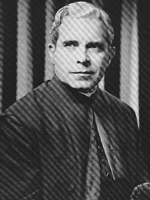
Physical plant enhancements were evident as the Bishop Dougherty Center (student union)
was built in 1962 and the Humanities Center (Fahy Hall) made its appearance six years
later. Counted among the educational initiatives which had their origins in this decade
were the first Ph.D. awarded in Educational Opportunity Program (EOP) started later that decade. Another milestone for Seton Hall occurred when full co-education
of the South Orange campus was enacted in 1968 and continues to this day.
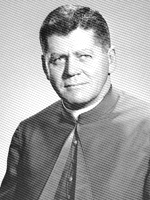
Monsignor Fleming served as Acting President and helped to increase academic opportunities
for the student body including the newly admitted female undergraduates on the South
Orange campus. He also endorsed needed additions to the Student Center that provided
increased dining facilities along with modifications eventually made to Corrigan Hall
during his time as chief administrator.
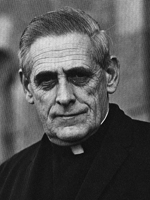
Under the guidance of Monsignor Fahy, the Center for Black (later known as African-American)
Studies was established in 1970. Another key addition to the campus landscape came
to the fore when the Puerto Rican Institute was founded four years later. During the
time of Monsignor Fahy, Seton Hall became more boarder-oriented when they opened Aquinas
Hall, the first residence hall for women in 1971. Within academic circles, the Schwartz Nursing College Complex opened in 1973. Governance of Seton Hall originally balanced between a 25-member
Board of Regents and 13 trustees, as operational leadership on a daily basis emanated
from the office of Monsignor Fahy. In addition, Elizabeth Ann Seton, patroness of
the University was canonized in Rome by Pope Paul VI in 1975, making her the first
American-born saint. A year later, in response to a great swell in religious-based
research, the New Jersey Catholic Historical Records Commission was founded at Seton Hall, where it remains active to this day.

Named acting president and his appointment made Mr. Cole the first lay chief executive
in school history although he served in an interim capacity. The Seton Hall Law School Center was dedicated at its downtown Newark locale in 1976 prior to the official
dedication of its current edifice 15 years later.
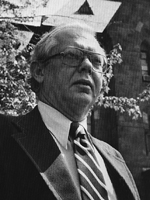
Dr. Conley oversaw the planning and implementation steps behind the signing of a "Sister-States"
agreement between the State of New Jersey and the Chinese – Zhejiang Province. This
is one of the first such agreements to be made between an American state and a province
in China.
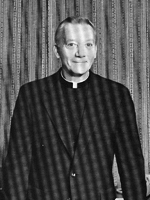
The work of Father Murphy centered on academic and administrative upgrades around
campus along with continued support of campus institutes and other key initiatives.
In 1979, Seton Hall joined the Big East Conference and became a competitive force in the intercollegiate sports world.
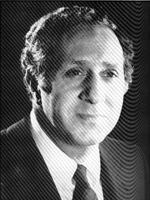
Seton Hall University celebrated its 125th anniversary in 1981. The doctoral program in the Immaculate Conception Seminary is built as the School of Theology returned to campus after being off-site since the
1920s. The George M. Ring Building became home to University Affairs (now University Advancement) in 1982 and that same year, Saint Andrew's Hall was purchased. An honorary degree was bestowed on Ronald Reagan who visited campus in 1983 becoming
the only standing U.S. President to visit the school.
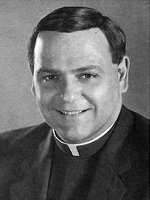
Served as the first Chancellor in school history. By 1987, the Seton Hall Preparatory
School and the University ended their mutual ties when "The Prep" moved its campus
to West Orange and was separately incorporated. Endorsed the construction of four
dormitory buildings, namely Cabrini, Serra, Neumann, and Xavier between 1986-88. Along
with improvements in residential housing options, the continued flow of commuter traffic
considerations resulted in the opening of the Farinella and the Ward Place gates in
1988. That same year, a new residence hall for resident clergy was christened, named
in honor of the Most Reverend Peter L. Gerety, Archbishop Emeritus of Newark. A new
recreation center was also attached to the venerable Walsh Gymnasium by 1987, and 17 years would be named in honor of former player and long-time athletics
administrator Richie Regan. This upgrade in athletic fortune led to a memorable appearance
for the men's basketball team in the NCAA Championship game in 1989.
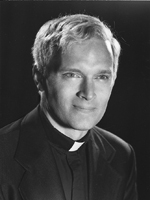
Monsignor Mahon transited from various administrative roles on campus to presiding
over a student enrollment of approximately 8500 students and eight distinctive schools
including graduate-level programs.
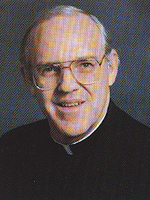
Prior to serving as Interim Chancellor, the work of Monsignor Liddy centered on that
of Rector and Dean of the School of Theology. His leadership efforts in Presidents' Hall were focused on academic-centered objectives
that included building on the educational advances established campus-wide over the
previous decade. Monsignor Liddy also helped to launch and oversee a five-year $100
million capital campaign on behalf of the University.
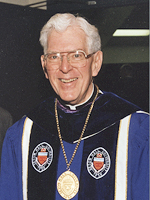
Served as Chancellor and was responsible for continued building initiatives that included
off-campus housing that included Ora Manor, a South Orange apartment complex. Father
Peterson also worked on developing a new Law School structure in Newark along with a new parking garage on the South Orange campus. He
was also instrumental in support of a new four-story christened Walsh Library. Known as the "Jewel of the Campus," the Library was built in 1994 and today contains
more than 600,000 volumes, along with numerous print and electronic resources. From
an academic vantage point, under Father Peterson, the intellectual growth of Seton
Hall has centered around an assemblage of specialized colleges and schools that included
the Immaculate Conception Seminary School of Theology, University College, University Libraries, and the School of Graduate Medical Education
among others.
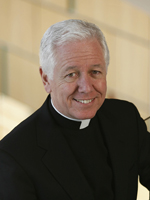
Under the leadership of Monsignor Sheeran, the Science and Technology Center in 2007 along with major renovations made to the Immaculate Conception Chapel a year
later.
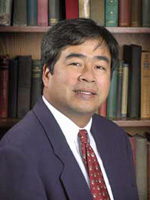
Under President Esteban, a host of improvements were made to the South Orange campus.
A 14,000-square-foot addition to the Richie Regan Recreation and Athletic Center was
completed in 2013. The first college building, Stafford Hall, was replaced by a technologically
advanced 12-classroom building in time for the Fall 2014 semester. A fourth floor
and expanded entrance were added to Aquinas Hall, and nearly 600 spaces were added
to the parking deck. The University also developed an Interprofessional Health Sciences (IHS) initiative and entered into a partnership with the Hackensack Meridian Health Network
to establish an IHS campus on the former Hoffmann-La Roche site in Nutley and Clifton.
The total undergraduate population at the start of the 2015-16 academic year numbered
6,065, which was the highest annual enrollment at Seton Hall in three decades.
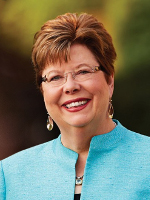
Interim President Meehan was the first woman to lead Seton Hall. During her tenure,
enrollment exceeded expectations and the University achieved the highest student-retention
rates in its history. Various construction projects were undertaken to further strengthen
the South Orange campus, most notably a new welcome center christened Bethany Hall
that opened in 2018. Additional ventures included upgrades to Owen T. Carroll Field and the completion of Phase I of the University Center renovation. Building on the
intellectual life and academic strength of the institution led to several key initiatives,
such as a University-wide inclusion dialogue among students, faculty and administrators,
along with several new academic degree programs, including an M.D. and M.S. in physics,
along with various minor and certificate programs.
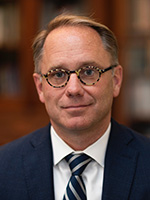
Named the 21st chief executive of Seton Hall in February 2019, President Nyre began
his tenure on August 1 of that year. He guided the University through the COVID-19
pandemic while advancing a vision and strategy to elevate Seton Hall among the nation’s
foremost Catholic higher education institutions. Hallmarks of his presidency included
a multi-year strategic plan, Harvest Our Treasures, which was a product of unprecedented involvement by the University community. Under
his leadership, Seton Hall Implemented an Affordability Agenda to provide maximum
financial aid and reshaped academic programs to rebalance instructional and non-instructional
expenses in favor of academics.
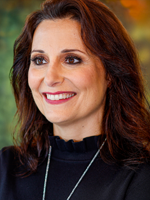
A nationally recognized knowledge management scholar with extensive higher education
experience, Katia Passerini, Ph.D., was appointed Interim President of Seton Hall
on July 24, 2023. Prior to this appointment, she served the University for three years
as Provost and Executive Vice President. Arriving during the height of the pandemic,
she played a key role in instituting the HyFlex teaching modality that enabled the
University to achieve safe and healthy in-person instruction. Interim President Passerini
was an influential voice in the development of Harvest Our Treasures. Advancing her strategic focus on research and academic innovation, Academic Affairs
made significant progress under her leadership. Her accomplishments at Seton Hall
include supporting the development of a host of new undergraduate and graduate programs;
hiring more than 60 full-time faculty members in two years; and facilitating the growth
of faculty grant applications by nearly 60 percent since 2020-21 and grant receipts
by 146 percent over the same period.
